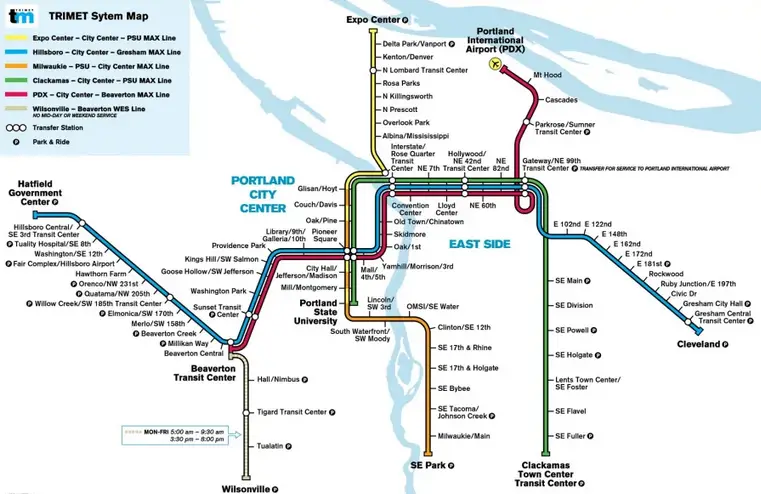Local PDX Resident Shows 3 STRIKING Ways To Improve the MAX

A much beloved feature of Portland, the MAX is really a great transport system. Whilst it’s certainly not the absolute best light rail network in the world, it generally does a great job and provides a decently reliable service at a reasonable price.
One local resident offered 3 different ways which the MAX could be improved without adding more trains and also whilst trying to keep costs down. Obviously whenever a public transport network is overhauled, the expenditure is always astronomic. However, with these 3 ideas the cost would be a little less than creating brand new lines that stretch from one side of the city to another.
Blue Line:
Due to the extended waiting times for trains, this extension to the blue line would mostly be aimed at easing congestion in to the city during rush hour. This would be a small edit to the current layout and would give commuters the option of transferring easily to green or red lines rather than being forced to wait for a blue line train.

Sky Line:
A new Sky line would somewhat merge with the existing red line. Platforms and track would have to be built, but in general there would not be too much disruption to existing buildings or roads.
This line would run between Gresham and PDX Airport. As this new line would use quite a lot of existing red track, the cost would be considerably lower than building an entirely new line from A to B.

Violet Line:
The new violet line would be responsible for connecting Gresham and Clackamas. Of course, the obvious downside with this line is that you can see that buildings would need to be demolished.
This route would require approximately 25 miles of new track to be laid which would drastically improve transit time between the two areas. Currently Gresham to Clackamas is around 20 stops with one change. A new violet line would allow a much quicker transit time and would have the option of either new additional stops or none at all.

Whilst the Portland MAX generally offers a great service throughout the city, there are some criticisms which have been levelled towards the public transport system.
Here are some common criticisms associated with the MAX:
- Cost: One criticism is the high cost associated with building and maintaining the MAX system. Critics argue that the expenses of constructing light rail lines and expanding the network could be better utilized in other areas, such as improving bus services or investing in road infrastructure.
- Limited Coverage: Critics argue that the MAX system does not provide comprehensive coverage throughout the city. While the light rail has expanded over the years, there are still areas in Portland that are not served by the MAX, limiting its accessibility and effectiveness as a public transportation option for all residents.
- Congestion: Some critics contend that the MAX has not effectively alleviated traffic congestion in the city. They argue that investments in expanding the light rail system have not resulted in a significant reduction in car usage or traffic congestion, leading to skepticism about the effectiveness of the system in addressing transportation challenges.
- Operating Deficits: Another criticism is the operational costs of the MAX system. Some argue that the fare revenues generated from the MAX are insufficient to cover the ongoing operating expenses, resulting in budget deficits. Critics question the long-term sustainability of the system if it heavily relies on subsidies to continue operations.
What about safety! It’s soo dangerous! Men expose themselves, threaten you, pee all over.